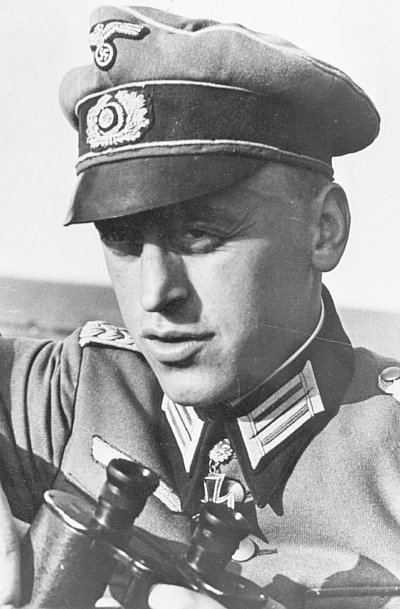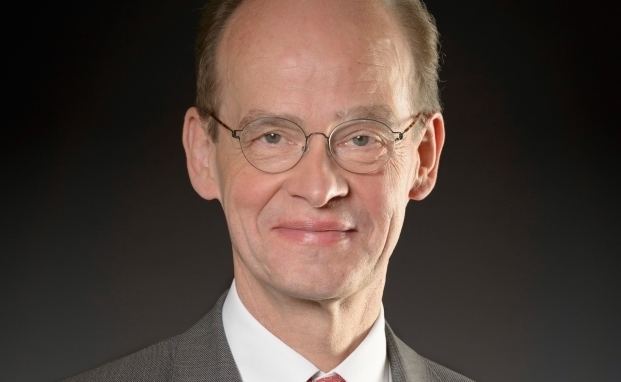Unit 15th Cavalry Regiment Years of service 1934–44 | Siblings Philipp von Boeselager Name Georg Boeselager | |
 | ||
Commands held "School for Shocktroops"Third Cavalry BrigadeCavalry Regiments Centre Battles/wars Invasion of PolandBattle of France20 July PlotEastern Front (World War II) Awards Iron Cross Second ClassIron Cross First ClassKnight's Cross of the Iron CrossKnight's Cross of the Iron Cross with Oak LeavesKnight's Cross of the Iron Cross with Oak Leaves and Swords Died August 27, 1944, Lomza, Poland Battles and wars Invasion of Poland, Battle of France, 20 July plot, Eastern Front | ||
Georg von Boeselager (25 August 1915 – 27 August 1944) was a German nobleman and an officer in the Wehrmacht of Nazi Germany, who led rear security operations in the area of Army Group Centre on the Eastern Front, calling for harsh measures, including shooting of all males in "gang-infested areas".
Contents

Along with his younger brother Philipp von Boeselager, he participated in the 1944 20 July Plot to assassinate Adolf Hitler. Soon after the plot failed, Boeselager was killed in action and was posthumously awarded the Knight's Cross of the Iron Cross with Oak Leaves and Swords.

Early life
Boeselager was born near Kassel into the noble Boeselager family. After enlisting in the army in 1934, he trained with a cavalry regiment. He became an officer in 1936 and in March 1939 was promoted to First Lieutenant. Boeselager took part in the Invasion of Poland and was awarded the Iron Cross 2nd Class. For his actions in the Battle of France (the bridging of the Seine near Les Andelys on 13 June 1940), he was awarded the Iron Cross 1st Class. The following January, he won the Knight's Cross of the Iron Cross. By July, he had been promoted to Captain.

In Operation Barbarossa, Boeselager's company performed reconnaissance for the double-pronged sweep around Brest-Litovsk to take Białystok and Minsk, seized bridgeheads over the Neman and Daugava rivers, and participated in the Battle of Moscow. For accomplishing his duties with distinction, he was granted the Knight's Cross with Oak leaves on 31 December 1941. He was then posted as instructor at the "School for Shocktroops" in Krampintz. While there, Boeselager became acquainted with members of the military resistance, who realised the war was not going well.
Rear security operations in Soviet Union
Boeselager took part in rear security operations conducted within the territory of the Soviet Union in the area of Army Group Centre. On 23 June 1943 as commander of Cavalry Regiment Mitte he sent a report to Henning von Tresckow regarding tactics of partisans and ways to reduce "risk of gangs", including his ideas on the subject; in the report he wrote:
It is impossible for a German soldier to distinguish between partisans and non-partisans... The regiment's view is that the area must be subdivided into a) pacified areas, b) areas threatened by gangs, c) gang infested areas. In areas threatened by gangs the men should be permitted to leave town and work only in groups; all males passing through such areas alone or in small groups must be shot or imprisoned at once... The bandit infested area must be swept clean of all males. Up to specific point in time, males up to the age of 50 will be seized and turned over to the economic office as laborers. After the deadline, men in this area will be shot.
Tresckow warmly received Boeselager's proposals and on 27 June he personally sent copies of Boeselager's ideas to all the armies within Army Group Centre, High Command of the Army and the Commanding Officer of the Eastern Troops. These ideas were eventually implemented in the directive from Heinrich Himmler (as chief of Bandenkampf, literally: "bandit fighting") of 10 July 1943: "Gang-infested areas of northern Ukraine and the middle region of Russia are to be cleansed of all of its inhabitants"
The plot to kill Hitler
After an audience with Field Marshal Günther von Kluge, commander of Army Group Centre, Boeselager was assigned as Deputy Commander, Cavalry Regiments Centre, a freestanding cavalry force fighting on the Eastern Front. Boeselager made frequent trips to confer with Kluge, sometimes flying along with the field marshal's staff on his transport plane.
According to a post-war account by Fabian von Schlabrendorff, at a 1943 field conference, the feasibility of an assassination of German dictator Adolf Hitler was discussed among some of the officers present, including Major General Henning von Tresckow and Boeselager. After being wounded in February 1944, Boeselager was assigned in June to a rear echelon squadron. He began to plot a new attempt on Hitler with Tresckow.
Boeselager was dispatched by Tresckow to urge his old commander, Kluge, to change his strategy and to join the conspiracy against Hitler. Kluge was now Commander-in-Chief in the West. Tresckow wanted Kluge to open the front in the West, begin negotiations for peace with the British and the Americans, and transfer units to the Eastern Front to fight the Soviets. Hitler and his national socialists would be eliminated. As Tresckow envisioned it, Kluge would arrange for the former's transfer so that he could help consolidate the coup. However, Kluge declined to participate in the plot or any planning. Boeselager continued to work with Tresckow and helped Wessel von Freytag-Loringhoven in procuring the British Hexogen plastic explosive and other parts used in the bomb meant to kill Hitler (a fact that his friends who were tortured by Hitler's security services never revealed).
Boeselager's younger brother, Philipp von Boeselager, later claimed that he and his brother began marching their columns on Berlin on July 20, in support of the plot, but hearing of the plot failure, turned around and were thus were not implicated in the plot. In a review of the book written by Philipp about their experiences in the resistance to Hitler, the historian István Deák has expressed doubts whether the ride west actually took place. He wrote he could not help feeling that it was an account not of what Philipp von Boeselager did, but of what he longed to do.
Boeselager was killed in action leading an assault against a heavily fortified Soviet position near Łomża on the Narew River on 27 August 1944. Two days later, he was posthumously promoted to Oberst and awarded the Knight's Cross with Oak Leaves and Swords.
